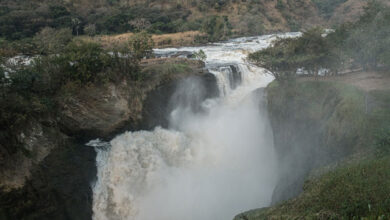Bunyoro Kings and their reign
Bunyoro-Kitara, a kingdom in western Uganda, has a rich cultural heritage, including vibrant traditional dances.

Feature: Bunyoro, also known as Bunyoro-Kitara, is a Bantu kingdom located in Western Uganda. It held significant power in Central and East Africa from the 13th century to the 19th century.
- Batembuzi Dynasty (Reign of the gods):
Kintu: The first king, but details about his reign are shrouded in mystery.
Kakama Bagabu: Succeeded Kintu.
Itwale Bagabu: Followed Kakama.
…and so on, with a lineage of kings spanning several centuries.
- Bachwezi Dynasty (Reign of the demi-gods):
Ndahura: Founded this dynasty, succeeding the Batembuzi.
Mulindwa: His reign followed Ndahura’s.
Wamara Bwigunda: Continued the lineage.
…and more, until the Babiito dynasty took over.
- Babiito Dynasty (Reign of the Kings):
Isingoma Rukidi I: The first Babiito king.
Ocaki I Rwangirra: His reign faced a cattle plague.
Oyo I Nyimba Kabamba Iguru: A significant ruler.
…..and a lineage of kings leading to the present day, with Solomon Iguru 1 as the 27th Omukama.
The Bunyoro-Kitara kingdom played a crucial role in Central and East Africa, and its history is a captivating blend of myth, tradition, and real-world events.
Significant events during their reign
- Isingoma Rukidi I:
Consolidated the kingdom’s power and established its capital at Mparo.
Faced external threats from neighboring kingdoms, including Buganda and Toro.
- Ocaki I Rwangirra:
Dealt with a severe cattle plague that affected the kingdom’s economy.
Strengthened Bunyoro’s military defenses.
- Oyo I Nyimba Kabamba Iguru:
Expanded the kingdom’s territory through military campaigns.
Fostered cultural and artistic development.
Engaged in diplomatic relations with European explorers and missionaries.
These events shaped the course of Bunyoro-Kitara’s history, reflecting both internal challenges and external interactions.
Some cultural achievements during their reign
Certainly! During the reigns of the Bunyoro-Kitara kings, several cultural achievements stood out:
- Art and Craftsmanship:
- Skilled artisans created intricate pottery, woven baskets, and wooden sculptures.
- The royal court patronized artists who produced beautiful jewelry, clothing, and ceremonial regalia.
- Oral Traditions and Literature:
- The Bunyoro people had rich oral traditions, including epic poems, folktales, and historical narratives.
- These stories were passed down through generations, preserving the kingdom’s history and values.
- Music and Dance:
- Traditional music and dance were integral to Bunyoro culture.
- Drums, xylophones, and other instruments accompanied lively dances during ceremonies and celebrations.
- Architecture and Sacred Sites:
- The construction of royal palaces, shrines, and burial grounds showcased architectural prowess.
- The royal tombs at Mparo remain significant cultural landmarks.
- Religious Practices:
- The Bunyoro people followed a blend of traditional beliefs and rituals.
- Ancestral spirits were revered, and ceremonies honored them.
Traditional dances in Bunyoro
Bunyoro-Kitara, a kingdom in western Uganda, has a rich cultural heritage, including vibrant traditional dances. Here are a couple of notable ones:
- Orunyege-Ntogoro:
- Originating from the Bunyoro and Tooro kingdoms, this dance is a courtship ritual.
- Young men and women perform it to attract and impress potential partners for marriage.
- The dance involves the use of rattles (called ebinyege) and rings (entogoro) to create rhythmic sounds and movements.
- Runyege (Entogoro):
- Also known as the Nyoro dance, it’s one of Uganda’s most famous traditional dances.
- Performed during courtship, it’s energetic and lively.
- Boys tie pod rattles (ebinyege) and rings (entogoro) around their legs, producing percussion rhythms that blend with the song and drumbeat.
Details about Bunyoro
- Founding and History:
- The kingdom was established in the early 14th century by Rukidi-Mpuga after the dissolution of the Empire of Kitara.
- The founders of Bunyoro-Kitara were known as the Babiito, succeeding the Bachwezi.
- Bunyoro controlled important shrines in the region and had a strong economy due to high-quality metallurgy.
- The kingship of Bunyoro is patrilineal, passed down through the male line based on a traditional myth involving milk pots.
- Current Ruler:
- The current ruler (Omukama) of Bunyoro is Solomon Iguru I, the 27th Omukama.
- His wife holds the title of Omugo, meaning “queen” in the Bunyoro language.
- Culture and Economy:
- In the past, Bunyoro’s economy revolved around big game hunting, but today, the Banyoro are primarily agriculturalists.
- They cultivate crops like bananas, millet, cassava, yams, cotton, tobacco, coffee, and rice.
- The people of Bunyoro are predominantly Christians.
How modernization has impacted Bunyoro’s traditions
Modernization has significantly impacted Bunyoro’s traditions. Here are some ways in which it has influenced the kingdom.
- Cultural Shifts:
- Language: The Banyoro continue to speak Runyoro, but English and Swahili are increasingly used due to education and globalization.
- Dress: Traditional attire is still worn during ceremonies, but everyday clothing has become more Westernized.
- Music and Dance: While traditional dances like “Runyege” and “Empaako” persist, modern music and dance styles have also gained popularity.
- Religion:
- Christianity has become widespread, impacting indigenous religious practices.
- Some rituals and beliefs have adapted to coexist with Christian practices.
- Education and Technology:
- Schools and universities have been established, leading to increased literacy and exposure to new ideas.
- Technology (such as mobile phones and the internet) has connected Bunyoro to the global community.
- Economic Changes:
- Agriculture remains central, but cash crops like coffee and cotton have replaced subsistence farming.
- Tourism and trade have grown, affecting traditional economic practices.
- Political Transformation:
- The monarchy still exists, but its role has evolved within Uganda’s political framework.
- Local governance structures have adapted to modern administrative systems.
Do you have an advertisement or article you want to publish? Mail us at theugreports@gmail.com or WhatsApp +256757022363.






